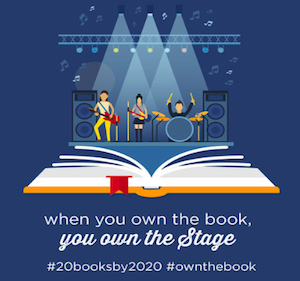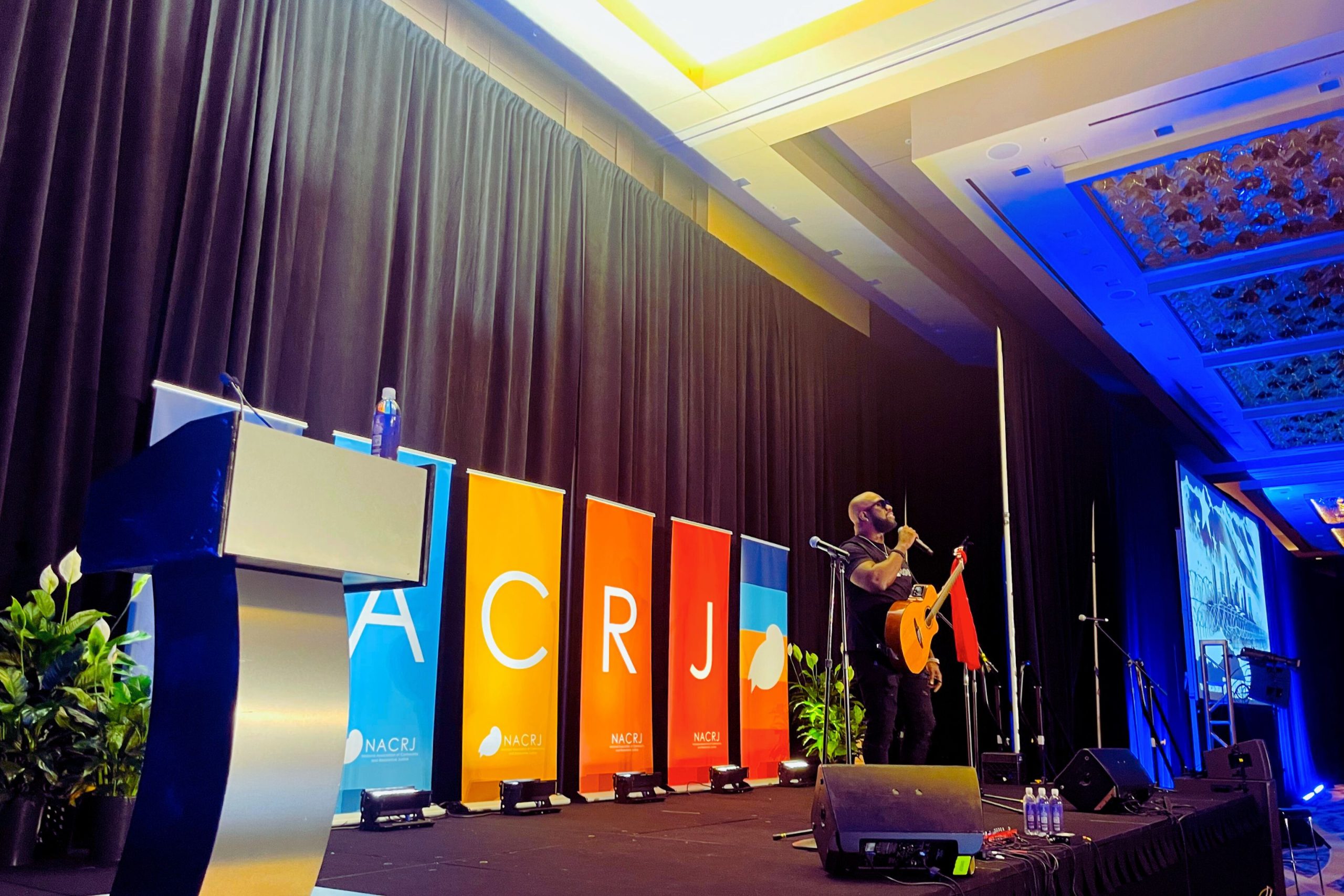 When You Own the Book, You Own the Stage
When You Own the Book, You Own the Stage
Did you know that having just 20 books in the home during early childhood contributes to three more years of education over those who don’t?
BookSpring, a homegrown nonprofit focused on building literacy in Central Texas families and children, envisions that every child will have at least 20 books at home by 2010.
SaulPaul is an ambassador helping spread the word about Books Springs “20 books by 2020” and the importance of book ownership and reading aloud as a family. Watch the video below to hear SaulPaul’s story of the impact of growing up with books at home.
About Book Spring
BookSpring builds early literacy in children and families through healthcare, education, and the community.
Book Spring History
Founded as a grassroots organization in 1974, BookSpring has been providing a critical role in closing the early literacy gap in Central Texas ever since. Grown out of merger of the local affiliates of two nationally acclaimed literacy organizations, Reach Out and Read and Reading Is Fundamental, BookSpring became a distinctly unique non-profit in 2008. It has continued to combine the best practices of these two research-based approaches adapted to suit the specific character and needs of the people of Central Texas. Through healthcare providers, schools, and community partners, we support over one hundred thousand child engagements with books for ownership annually. We provide tens of thousands of hours of motivational activities to children through our program partners and volunteers, increasing the parent’s awareness of the importance of reading aloud, and child’s intrinsic motivation and reading skills, and the number of books in the home. Through access to books, promotional events, and information on how to engage families in the world through written and spoken language, we aim to inspire a lifelong love of reading.
Literacy Statistics (as featured at BookSpring.Org)
A wealth of research provides evidence for the effectiveness of the core activities of BookSpring, including books-for-ownership programs; reading aloud practices; anticipatory guidance from doctors; parent engagement outreach; and family enrichment events that motivate young children to become readers and learners for life.
Here are just a few examples:
- Higher reading exposure was 95% positively correlated with a “hub” region supporting semantic language processing in the brain, controlling for household income. Hutton, J. S., Horowitz-Kraus, T., Mendelsohn, A. L., DeWitt, T., & Holland, S. K. (2015). Home Reading Environment and Brain Activation in Preschool Children Listening to Stories. Pediatrics, 136(3), 466-478.
- Children growing up in homes with at least 20 books get 3 years more schooling than children from bookless homes, independent of their parents’ education, occupation, and class. Evans, M. D., Kelley, J., Sikora, J., & Treiman, D. J. (2010). Family scholarly culture and educational success: Books and schooling in 27 nations. Research in Social Stratification and Mobility, 28(2), 171-197.
- Across the nation just under half of children between birth and five years (47.8%) are read to every day by their parents or other family members. Russ S, Perez V, Garro N, Klass P, Kuo AA, Gershun M, Halfon N, Zuckerman B. Reading Across the Nation: A Chartbook (2007): Reach Out and Read National Center, Boston, MA
- The most successful way to improve the reading achievement of low-income children is to increase their access to print. Newman, Sanford, et all. “Americans Child Care Crisis: A Crime Prevention Tragedy”; Fight Crime; Invest in Kids, 2000.
- Findings show higher-than-average scores among students who reported more types of reading material at home. Donahue, P. L., A. D. Finnegan, and N. L. Lutkus, The Nation’s Report Card: Fourth-Grade Reading 2001 (PDF file), U.S. Department of Education, NCES, Washington, DC 2001.
- Creating a steady stream of new, age-appropriate books has been shown to nearly triple interest in reading within months. Harris, Louis. An Assessment of the Impact of First Book’s Northeast Program. January 2003
- Almost 13 million American children live in poverty (“Geography Matters: Child Well-Being in the States. Every Child Matters Education Fund April 2008.
- 78% of juvenile crime is committed by high school dropouts. “Literacy Research.” National Children’s Reading Foundation.
- An American kid drops out of high school every 26 seconds. The Forum for Youth Investment with the Ready by 21™ Partners. Getting the Most Out of Your Dropout Prevention Summit: Planning Guide. May 2008. Forum for Youth Investment and America’s Promise Alliance.
- Each dropout, over his or her lifetime, costs the nation approximately $260,000. Rouse, C.E. (2005). “Labor market consequences of an inadequate education.” Paper prepared the Social Costs of Inadequate Education symposium, Teachers College Columbia University. October 2005.
- 37 percent of children arrive at kindergarten without the skills necessary for lifetime learning. Landry, S. H. (2005). Effective Early Childhood Programs: Turning Knowledge Into Action. Houston, TX: University of Texas, Health Science Center at Houston.
- Half of youths with a history of substance abuse have reading problems. National Information Center for Children and Youth with Disabilities. (1998). Children with reading disability. Washington, D.C.: Robert Bock.Half of these children from low-income communities start first grade up to two years behind their peers. Brizius, J. A., & Foster S. A. (1993). Generation to Generation: Realizing the Promise of Family Literacy. High/Scope Press.
- Children from low-income families are at greater risk for entering school unprepared. According to a national longitudinal analysis by the U.S. Department of Health and Human Services (HHS), economically disadvantaged children may know only one or two letters of the alphabet when entering kindergarten, while children in the middle class will know all 26. Lee, V. E. & Burkam, D. T. (2002). Inequality at the starting gate: Social background differences in achievement as children begin school. Washington, D.C.: Economic Policy Institute.
- By the age of 2, children who are read to regularly display greater language comprehension, larger vocabularies, and higher cognitive skills than their peers. Raikes, H., Pan, B.A., Luze, G.J., Tamis-LeMonda, C.S.,Brooks-Gunn, J., Constantine, J., Tarullo, L.B., Raikes, H.A., Rodriguez, E. (2006). “Mother-child bookreading in low-income families: Correlates and outcomes during the first three years of life.” Child Development, 77(4).
- The Early Childhood Longitudinal Study found that in the spring of 2000, the children who were read to at least three times a week by a family member were almost twice as likely to score in the top 25% in reading compared to children who were read to less than 3 times a week. Denton, Kristen and Gerry West, Children’s Reading and Mathematics Achievement in Kindergarten and First Grade (PDF file), U.S. Department of Education, NCES, Washington,
DC, 2002.








